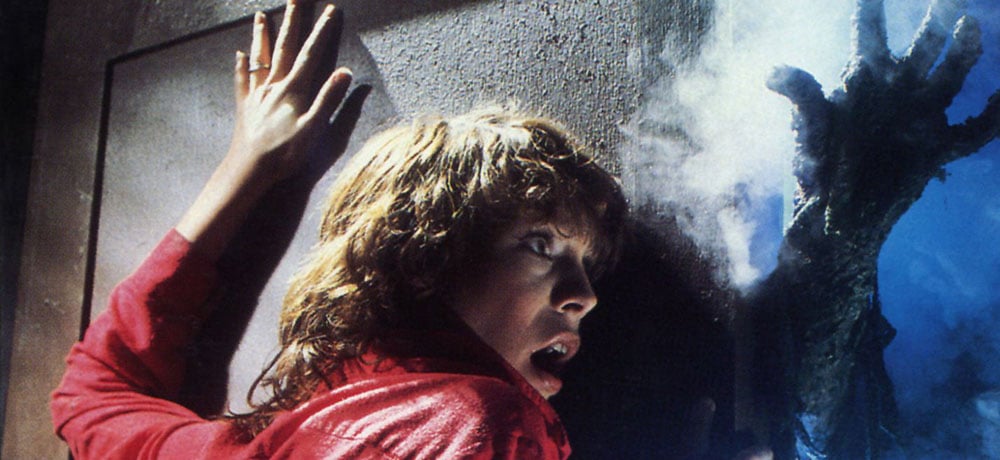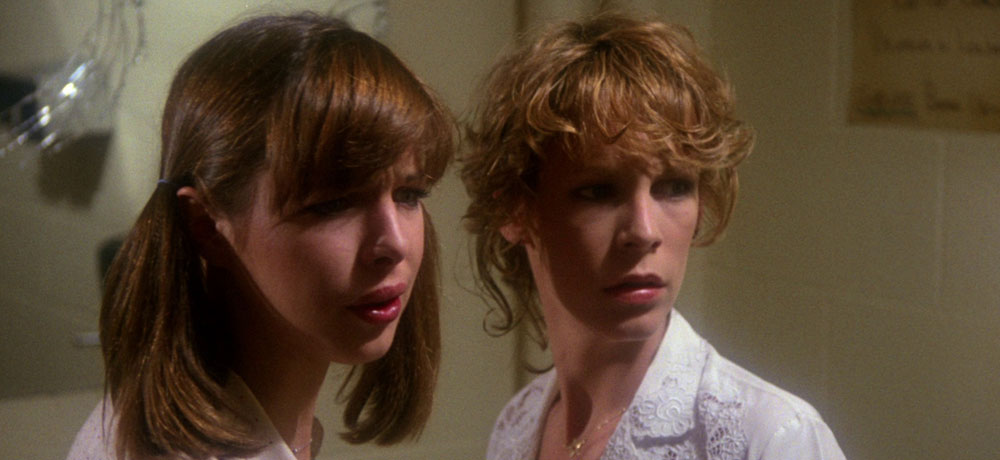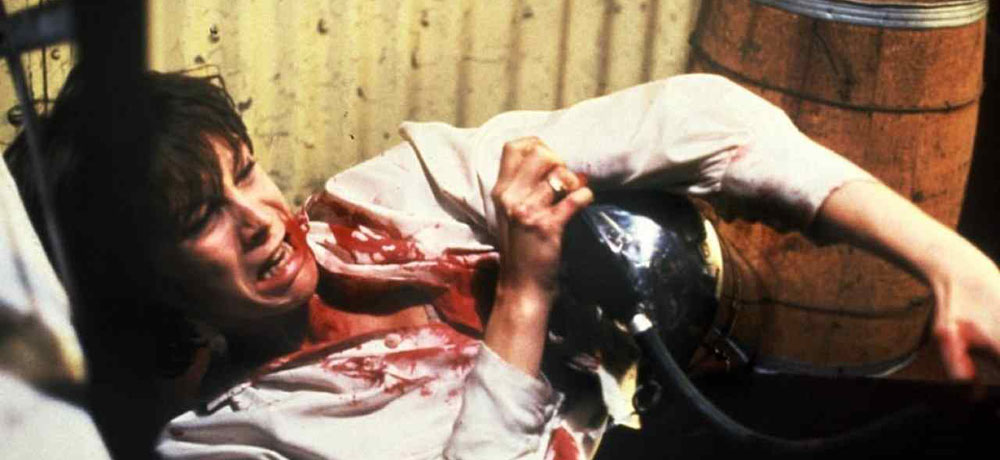


While Halloween undoubtedly became a huge moment in her career in 1978, and rightfully so, it was in 1980 when the now-iconic actress Jamie Lee Curtis firmly established herself as a cinematic force to be reckoned with in the world of genre filmmaking. Not only did Curtis appear in three different horror projects that year, but she also hosted a hilarious episode of Saturday Night Live to boot, which showcased her versatility and quickly established as Curtis as one of the most exciting talents on the brink as Hollywood was heading into a brand new decade.

It was in February 1980 when John Carpenter’s The Fog was first released, which featured Curtis joining a star-studded ensemble that featured the likes of Hal Holbrook, Adrienne Barbeau, Tom Atkins, Nancy Loomis, Charles Cyphers, and even her own mother, Janet Leigh, as well. While it’s a standout amongst Carpenter’s stellar genre output in a myriad of ways, one of the biggest reasons I have always loved The Fog is how Carpenter and Debra Hill’s script, as well as the film’s cast, approached The Fog’s female characters, and Curtis’ vivacious performance as Elizabeth Solley was a huge part of that.
We first meet Elizabeth on the side of the road in Antonio Bay, as she’s hitchhiking her way towards Vancouver and gets picked up by self-proclaimed “weirdo” Nick Castle (Atkins). From the moment she enters his truck, it’s hard to take your eyes off of Elizabeth, with her plucky resolve and outwardly demeanor on full display. Elizabeth is the kind of person most of us strive to be: friendly, adventurous, and infectiously charming. Oh, and she’s also willing to take a drink from a total stranger, too, as Nick gives her a beer to enjoy early on in their travels together, proving that Curtis’ character in The Fog also has a sense of fearlessness to her, and that’s a quality that this writer wishes she had more of in her own life.
Shortly after an eventful drive into Antonio Bay, Elizabeth goes home with Nick and spends the night, and the scene with Curtis and Atkins’ characters post-coitus is yet another highlight in The Fog. Not only does it feel extremely sex positive, where there’s no judgment, it’s just two consenting adults who really dig each other and want to spend the night being intimate together, but it’s also during this scene when we get more of a peek into Elizabeth’s mysterious backstory. During their conversation, we learn that she’s an artist who loves being creative, but has no earthly idea just what she wants to be when she “grows up” (I STILL feel that way). But Elizabeth reveals that she’s willing to walk away from a life of stability and financial security back in Pasadena (which is kinda funny since Halloween was shot in Pasadena) in search of something more, making Elizabeth something of a badass renegade who marches to the beat of her own drum.
And as things continue to go sideways during Antonio Bay’s 100th anniversary celebration, Elizabeth finds herself in the thick of things with Nick, and they have to work together in order to survive Blake’s vengeful wrath. When most people would make a run for it, especially when you’re someone just “passing through,” Elizabeth sticks by her new beau through the terror of the all-consuming Fog and several other horrifying instances, establishing Curtis’ character as someone who is proactive and tenacious. The Fog also gives Elizabeth several fright-filled moments, where we see exactly just why Curtis was deemed the first “Scream Queen,” and Elizabeth even takes charge when she and Nick have to rescue little Andy Wayne (Ty Mitchell), driving them to safety.
Truth be told, Laurie Strode will always be my favorite of Curtis’ horror-related characters, but Elizabeth Solley is a close second, and as much as I think The Fog is a top-tier ghost story crafted by one of the best filmmakers ever, it’s also a fantastic celebration of the female spirit, and Curtis’ performance is such a huge part of that.

It was during the hot and steamy summer of 1980 when AVCO Embassy (who was also the distributor of The Fog) released Paul Lynch’s Prom Night, a disco-fueled slasher that featured Curtis as one of the siblings of Robin Hammond, a youngster who died after a childhood prank went awry. Six years later after her death, a masked killer looking for revenge wants those involved to atone for their sins, and picks the penultimate night of the high school experience to murder those responsible for Robin’s death: the senior prom.
If I’m being perfectly honest, Prom Night isn’t the most compelling slasher of its era, and it’s definitely the weakest of the trio of Curtis films from 1980, but it’s a film that I enjoy probably more than most. The characters in Prom Night don’t feel very cookie cutter at all (they may seem that way now simply because so many films that followed in its footsteps treated these characters as a blueprint for what we expect from horror movies centered around teens), and I also dig the fashion and music, and the show-stopping dance number which has become Prom Night’s most iconic sequence over the last 40 years is still straight fire. It may seem silly to you younger folks, but it truly fills me with so much joy when I watch it now (I’m old, is basically what I’m saying here).
And while Prom Night may have some issues, Curtis’ turn as Kim Hammond is definitely one of the film’s strongest attributes, and I think there’s something extremely likeable about her. She’s confident, she’s kind, she’s empathetic, and she can bust quite a move, as we see during the scene when she sneaks into the gym to practice her struts and sashaying on the makeshift dance floor. She’s someone who is haunted by loss, so underneath her Popular Girl persona, you get a sense that Kim’s life is tinged with a stinging sense of sadness about what happened in the past to her sister, and it’s something that weighs heavily on her internally.
I think the scene where we see that exemplified is during Prom Night’s final moments, when Kim comes to realize that it’s her brother Alex behind the glittery ski mask, and she begs for mercy on his behalf when he stumbles outside of the school, succumbing to the axe wound on his head. It’s in that moment when it all hits Kim the hardest, as she’s now left as the sole sibling of her family, and even though her brother was butchering her friends, Kim’s compassion comes through nonetheless because she knows how much he’s suffered. For a slasher film, Prom Night ends on a rather tragic note, which is a bit uncharacteristic, and it’s Curtis’ performance, particularly in those final minutes, that really sells the pain of trauma, and how it can tear us apart if we don’t deal with it.

Speaking of traumatic experiences, the final 1980 film that Jamie Lee appeared in is Terror Train, which arrived on the big screen in October of that year. The whole mystery behind the reason why someone is killing off a bunch of college co-ed passengers aboard the titular transport also involves a prank in the past that went horribly awry. The film starts off three years in the past when a group of fraternity brothers decide to haze an unassuming pledge named Kenny, who thinks he’s about to get lucky with Alana, Curtis’ character, but as he undresses and slips into bed, he finds himself cozied up next to a gnarly cadaver, which causes poor Kenny an endless amount of mental anguish, causing him to have to be sent away to a psychiatric hospital.
While everyone else involved has seemingly moved on from the “Kenny Incident,” it’s something that Alana hasn’t been able to shake off at all. In fact, during one conversation, she reveals that she even tried to visit Kenny in the hospital, but was told that he couldn’t accept visitors after a violent incident involving Kenny resulted in someone dying. So, while Alpha Males like Doc (Hart Bochner, who also played everyone’s favorite coked-out executive in Die Hard) are cool with just pretending nothing ever happened, the horror of that night still lives on inside Alana’s psyche.
Eventually, Kenny’s identity aboard the Terror Train is revealed, and during the film’s climax, there is an intensely emotional confrontation between him and Alana that’s a standout moment for many reasons. One, it makes that callous prank feel more realized, as we see Kenny wearing the pain of that night prominently all over his visage. But more so, it shows Alana as a fallible heroine. She’s not perfect. She may have regretted what happened with that prank, and may have even had to be slightly coerced into participating in the torturing of poor Kenny, but Alana’s still an adult who has to live with her decisions all the same.
And while Curtis’ character is definitely the heroine of Terror Train, and we as viewers want her to survive, the sit down she has with Kenny, regardless of his murderous intentions, is demonstrative of someone who is willing to reckon with their past, and atone for what they’ve done, and we needed that from Alana. Her character needed to earn her redemption, and I think Curtis’ performance during that scene in particular is truly a standout moment in her early career.
Three movies. Three vastly different characters. A trio of unforgettable performances. Yes, Halloween is what put Jamie Lee Curtis on the proverbial map, but it was during the year of 1980 when she firmly established herself as a powerhouse player in genre cinema, and she continued to do so for decades to come.
---------
Visit our online hub to catch up on all of our Class of 1980 retrospectives!